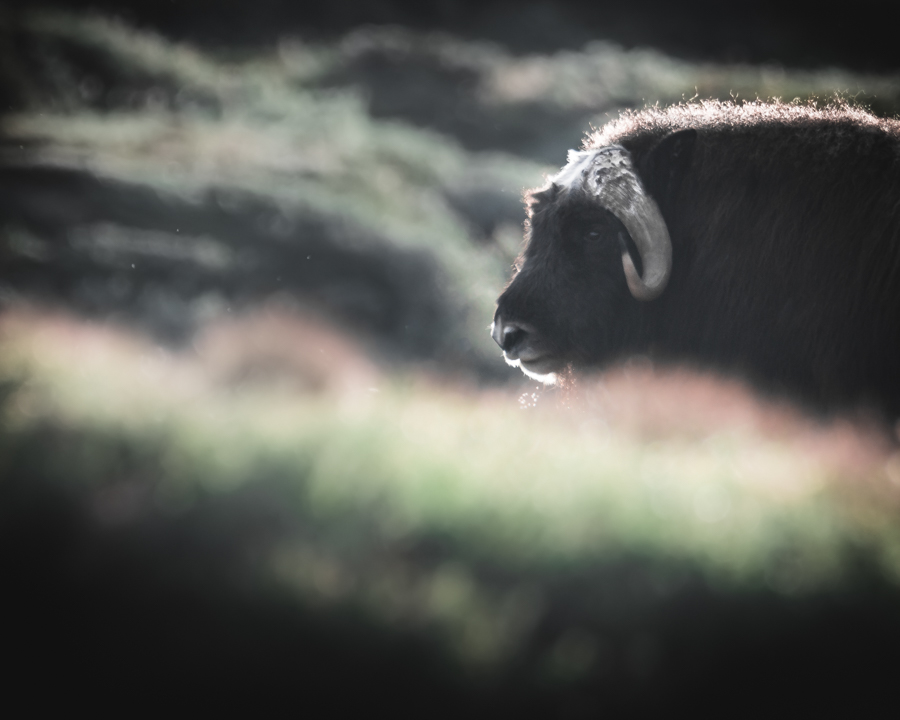- Guinness and t-tests: To Gosset! - 20/10/2020
- A Field Season in New Zealand: One Mesocosm Experiment to Rule them All - 24/04/2020
- The Story of the K’Gari (Fraser Island) Dingoes - 22/03/2019
Last July, a friend and I went on a wild camping road trip around southern Norway. The highlight was definitely seeing musk oxen (Ovibos moschatus) in Dovrefjell. Spending a couple of days watching and photographing these animals in the wild was an experience I’ll never forget.
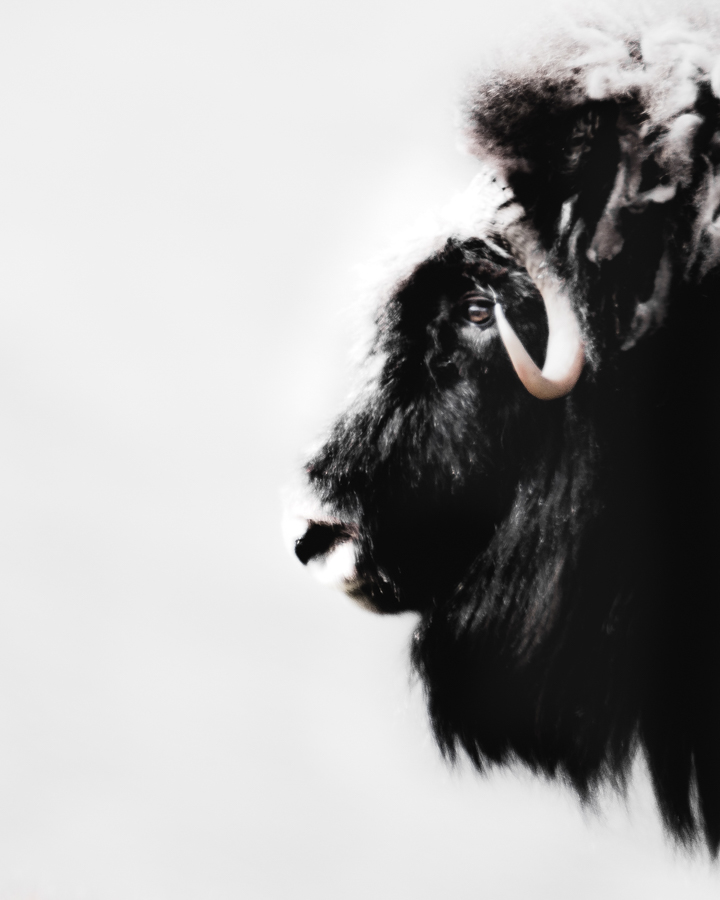
Musk oxen, bovids which are more closely related to sheep than cows, are ancient creatures. Animals just like the ones we saw have been around for a million years without changing very much. They are found in cold tundra ecosystems in the northern hemisphere, mostly in Northern Canada.
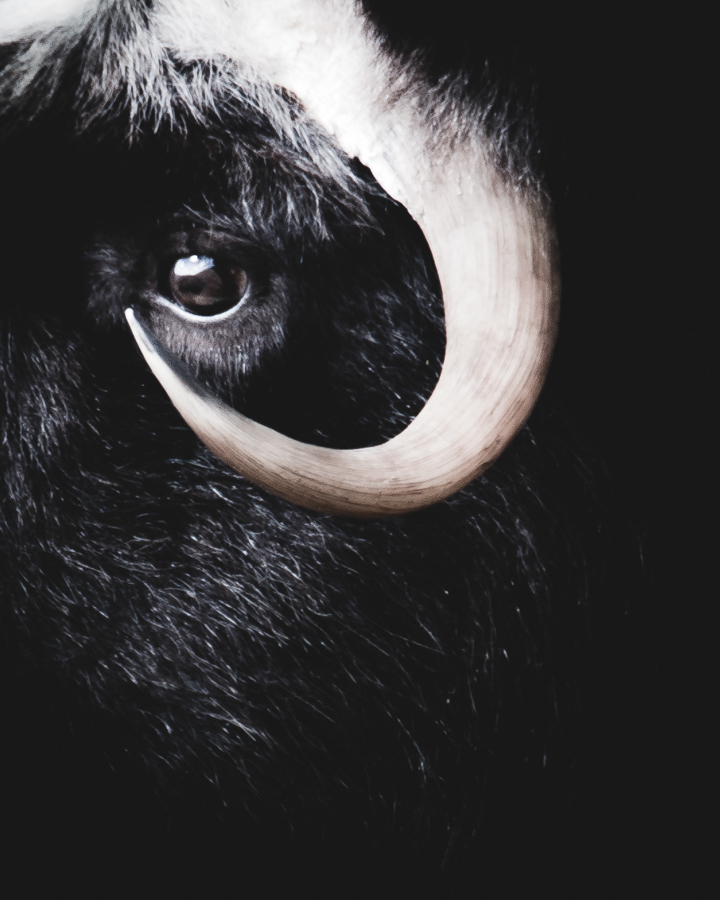
Musk oxen show serious sexual dimorphism. Compared to the cows, the bulls have much larger horns, which they use like a battering ram to compete with each other for access to the ladies. These animals look pretty gigantic but their hairiness hides the truth: on average the adults are only about 300kg (half the weight of bison).
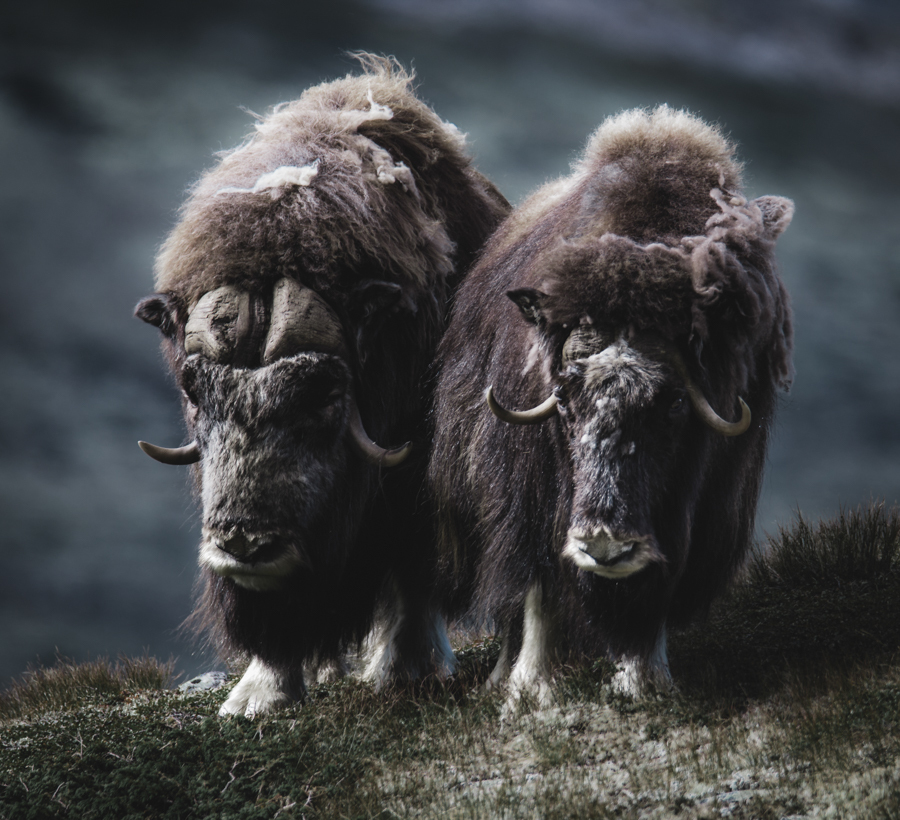
The musk oxen of Europe and Asia went extinct after the last ice age, due to a warming climate. When musk ox fossils were discovered in Norway during the 1920s, an ambitious reintroduction was attempted using 10 individuals from Canada. Sadly, these animals were hunted and eaten during the Second World War.
After a second reintroduction to the Dovrefjell plateau in 1947, musk oxen were thriving in Norway’s tundra after about 10,000 years of absence. The descendants of these Canadian musk oxen that made the journey across the Atlantic just over 70 years ago were what we saw this July.
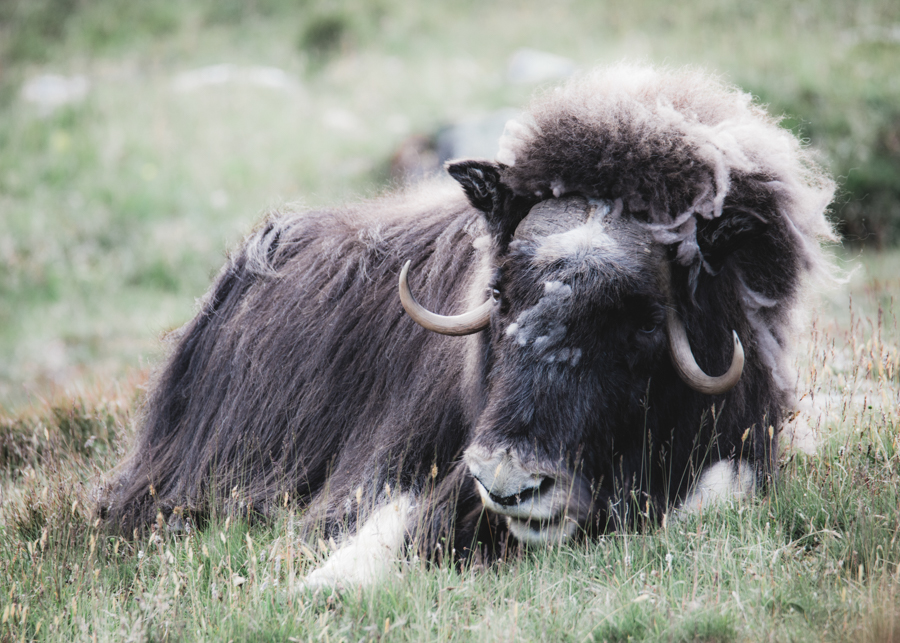
Wolves are the main predators of musk oxen. However, wolves were hunted to extinction in Norway by the 1960s. They have since recolonized a small area in the south east of the country but are facing serious resistance from farmers (and the lobbied government) who are halting the natural return of the wolves. With no predators of musk oxen in Dovrefjell, the giant herbivores must be culled every few years to stop them from spreading outside the park.
Our trip to Dovrefjell
Dovrefjell National Park sits on a plateau over the tree line, at 1000m above sea level. Snøhetta, the country’s tallest peak outside of Jotunheimen is found in the park. Most of Dovrefjell is actually relatively flat tundra, which provides habitat for wild reindeer, Arctic fox (reintroduced in 2010), and endemic alpine plants.
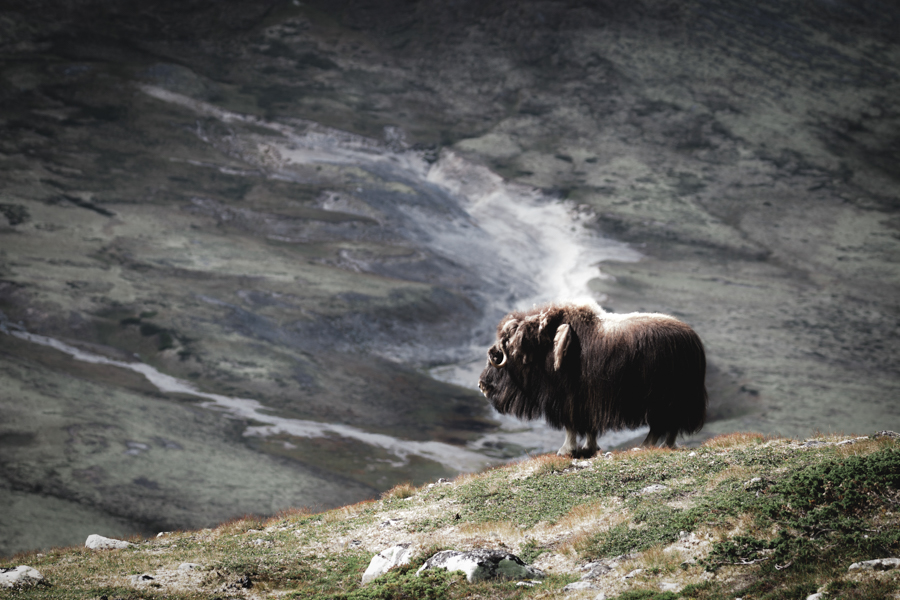
We parked our car at the edge of Dovrefjell and hiked up onto the plateau in search of the musk oxen. Every few kilometers I set up my telephoto lens on the tripod to scan the horizon for our quarry. After hours of hiking we eventually spotted some hairy boulders walking across a ridge in the distance…
Ten minutes later we had set up our tent, wolfed down some food and had begun hiking up towards the musk oxen. They were heading towards a cirque (a little depression in the side of the mountain). They settled down in this cirque for the evening, which was well up above the valley floor but still sheltered from the wind.
Once we got to about 400 meters away from them I got down on my stomach and began inching forward, Special Forces style. After about 20 minutes (and now with a face covered in moss and mud) I was close enough to see the musk oxen in great detail through my telephoto lens. It was a small herd of six cows, seven calves, and one large bull. Some of the calves must have been about a year old but a few were probably only a couple of weeks old.
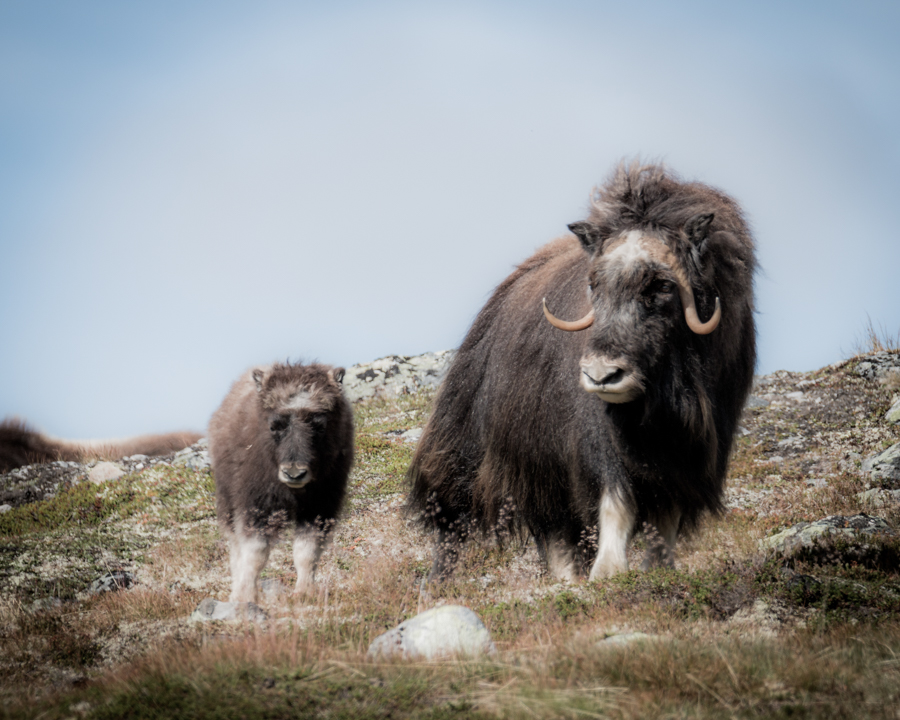
After a few hours of watching them from a distance and taking some photographs it was almost midnight and the sky was turning dark. We hiked back down to the tent in a state of awe.
The following morning we rose with the sun at 5am. My friend headed off for the day to climb Snøhetta but I wanted to spend more time with the musk oxen. I started hiking up towards the cirque where the musk oxen had spent the night.
After about twenty minutes of trudging through fields of thick willow and heather I stumbled across a lone bull. Neither of us had noticed each other until we were quite close, maybe 50 meters. We both stood still for what felt like an eon, with our breath fogging up in the freezing morning air. The musk ox’s “musky” smell and the colours of its backlit hair glowing in the morning sun have been soldered into my memory.
Eventually the big bull relaxed and started munching on some greens. I moved on to let him have his breakfast in peace and to catch up with the herd I had seen the night before.
We spent some more time with the musk oxen after that, but then our food supplies ran out and we retreated to civilization. I will definitely return to the wilderness of Dovrefjell to see these amazing animals again some day.
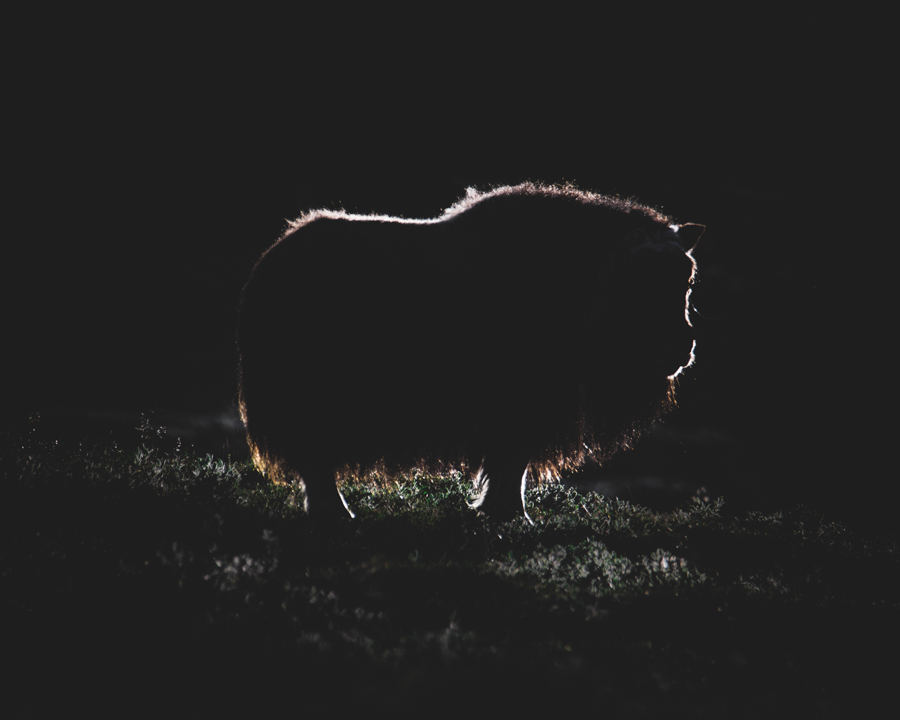
Some things to keep in mind if watching and photographing musk oxen:
- If you are lucky enough to see these animals in Dovrefjell (or elsewhere) it is very important that you never get too close to them. Apart from the fact that they are big powerful animals that can run at speeds of up to 60km/h, if you are too close to these animals you will give them unnecessary stress, especially if there are any calves around.
- Even though some of the images are close ups, I was never that close to these animals. All the images were taken on a crop sensor camera on a 600mm telephoto lens and the tight shots have also been seriously cropped during post processing. A smartphone won’t cut it for photographing musk oxen!
- When photographing them, I tried to disturb them as little as possible and made a big effort to learn about their behavior before I went. If they are looking at you, you are too close and you should move away to let them relax. If they start to group together you are way too close and should definitely move away. If they are ignoring you and behaving naturally (e.g. eating or sleeping) then you are a good distance away.
______________
About the Author

